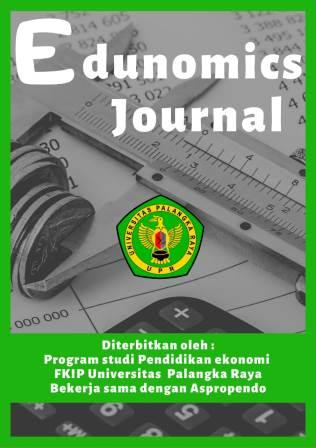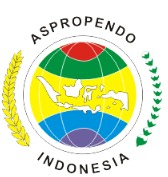Pengaruh Faktor Fraud Hexagon Terhadap Kecurangan Laporan Keuangan Pada Sektor Consumer Non – Cyclicals
DOI:
https://doi.org/10.37304/ej.v6i1.19959Keywords:
Fraud Hexagon, Fraud, Financial Reporting.Abstract
Fraud refers to intentional dishonesty, misrepresentation in presenting company assets, or manipulated financial data that benefits the manipulator. Misstatements by employees are made by recording fictitious revenue, reducing expenses, or inflating income. Fraud is typically committed to cover up poor company performance. The purpose of this study is to examine the impact of external pressure, nature of the industry, auditor changes, director changes, CEO duality, and political connections on fraudulent financial reporting. This study is a quantitative research using secondary data. Secondary data is obtained from the annual reports and financial statements of consumer goods sector manufacturing companies listed on the Indonesia Stock Exchange. The objects of this study are Consumer Non-Cyclicals sector manufacturing companies listed on the Indonesia Stock Exchange for the period 2020-2022. The sample is determined using a purposive sampling method. In data analysis, the researcher employs stages of descriptive statistical tests, hypothesis testing, and multiple linear regression analysis with the help of Microsoft Excel and STATA software. The results show that the external pressure variable, proxied by leverage, has no impact on fraudulent financial reporting. The nature of the industry variable, proxied by receivables, has no impact on fraudulent financial reporting. The change in auditor variable, proxied by TACC, does not have a significant negative impact on fraudulent financial reporting. The director changes variable, proxied by BDOUT, has no impact on fraudulent financial reporting. The CEO duality variable has no impact on fraudulent financial reporting. The collusion variable, proxied by political connections, has an impact on fraudulent financial reporting.
Downloads
References
Ainiyah, L. N., & Effendi, D. (2021). Pengaruh Hexagon Fraud Theory Dalam Mendeteksi Kecurangan Laporan Keuangan (Studi Perusahaan Manufaktur Sub Sektor Food And Bavarage Yang Terdaftar Di Bursa Efek Indonesia 2016-2020). Jurnal Ilmu Dan Riset Akuntansi, 11(10).
Annisya, M., Lindrianasari., & Asmaranti, Y. (2016). Pendeteksian Kecurangan Laporan Keuangan Menggunakan Fraud Diamond. Jurnal Bisnis dan Ekonomi (JBE), Vol. 23, No. 1, 72-89
Association of Certified Fraud Examiners. (2021). The Fraud Tree. Diakses pada 23 September 2021, dari https://www.acfe.com/fraud-tree.aspx
Cressey, D. R. (1953). Other People’s Money: A Study of The Social Psychology of Embezzlement
Dechow, P. M., Ge, W., Larson, C. R., & Sloan, R. G. (2011). Predicting Material Accounting Misstatements. Contemporary Accounting Research, Vol. 18, No. 1, 17-82
Fabiolla. R. G., Andriyanto, W. A., & Julianto, W. (2021). Pengaruh Fraud Pentagon Terhadap Fraudulent Financial Reporting. Konferensi Riset Nasional Ekonomi, Manajemen, dan Akuntansi, Vol. 2. 981-995
Fajri, M. A. N., Febrianti, G. B., & Rahmayani, S. (2023). Pengaruh Fraud Hexagon terhadap Kecurangan Laporan Keuangan pada Perusahaan Properti dan Real estate yang Terdaftar di Bursa Efek Indonesia Tahun 2018-2021. 2(2), 767–780.
Hadi, M. S. W., Kirana, D. J., & Wijayanti, A. (2021). Pendeteksian Fraudulent Financial Reporting Dengan Fraud Hexagon Pada Perusahaan Di Indonesia. PROSIDING BIEMA Business Management, Economic, and Accounting National Seminar, 2, 1036–1052.
Hugo, J. (2019). Efektivitas Model BeneishM-Score dan Model F-Score dalam Mendeteksi Kecurangan Laporan Keuangan. Jurnal Muara Ilmu Ekonomi dan Bisnis, Vol. 3, No. 1, ISSN: 2579-6224, ISSN-L: 2579-6232, 165-175
Imtikhani, L., & Sukirman. (2021). Determinan Fraudulent Financial Statement Melalui Perspektif Fraud Hexagon Theory Pada Perusahaan Pertambangan. In Jurnal Akuntansi Bisnis, 19 (1), 96-113.
Imtikhani, L., & Sukirman. (2021). Determinan Fraudulent Financial Statement Melalui Perspektif Fraud Hexagon Theory pada Perusahaan Pertambangan. Jurnal Akuntansi Bisnis, Vol. 19, No. 1, ISSN: 1412-775X (media cetak)/2541-5204(media online)
Jannah, V. M., Andreas, & Rasuli, M. (2021). Pendekatan Vousinas Fraud Hexagon Model dalam Mendeteksi Kecurangan Pelaporan Keuangan. Studi Akuntansi Dan Keuangan Indonesia, 4(1), 1–16. https://doi.org/10.21632/saki.4.1.1-16
Jensen, M. C., & Meckling, W. H. (1976). Theory of The Firm: Managerial Behavior, Agency Costs and Ownership Structure. Journal of Financial Economics, 3, 305–360. https://doi.org/10.1177/0018726718812602
Larum, K., Zuhroh, D., & Subiyanto, E. (2021). Anti Fraud dan Whistleblowing Intention: Peran Intensitas Moral dan Pengambilan Keputusan Etis. AFRE (Accounting and Financial Review), 4(1), 82–94. https://doi.org/10.26905/afr.v4i1.5957
Larum, K., Zuhroh, D., & Subiyantoro, E. (2021). Fraudlent Financial Reporting: Menguji Potensi Kecurangan Pelaporan Keuangan dengan Menggunakan Teori Fraud Hexagon Kordianus. AFRE (Accounting and Financial Review), 4(1), 95–106. https://doi.org/10.26905/afr.v4i1.5957
Lindasari, V. (2019). Deteksi Kecurangan Laporan Keuangan dengan Ukuran Perusahaan Sebagai Variabel Moderating Menggunakan Pentagon Analisis. Buku 2: “Sosial dan Humaniora”. Vol. 5, E-ISSN: 2540-7589, P- ISSN: 2460-8696
Lionardi, M., & Suhartono, S. (2022). Pendeteksian Kemungkinan Terjadinya Fraudulent Financial Statement menggunakan Fraud Hexagon. Moneter - Jurnal Akuntansi Dan Keuangan, 9(1), 29–38. https://doi.org/10.31294/moneter.v9i1.12496
Mantangkin, L., NG, S., & Mardiana, A. (2018). Pengaruh Kemampuan Manajerial dan Koneksi Politik Terhadap Reaksi Investor dengan Kecurangan Laporan Keuangan sebagai Variabel Mediasi. SiMAK Universitas Atma Jaya, Vol.16, No. 2, 182-209
Nadziliyah, Herlina, and Niken Savitri Primasari. 2022. “Analisis Fraud Hexagon Terhadap Financial Statement Fraud Pada Perusahaan Sektor Infrastruktur, Utilitas Dan Transportasi.” Profesionalmudacendekia.Com 2(1):21–39. doi: 10.47153/afs21.2702022.
Novarina, D., & Triyanto, D. N. (2022). Pengaruh Fraud Hexagon Terhadap Kecurangan Laporan Keuangan Pada Perusahaan LQ 45 Yang Terdaftar di Bursa Efek Indonesia Periode 2016-2020. Jurnal Akuntansi Dan Keuangan, 10(2), 183–193. https://doi.org/10.29103/jak.v10i2.7352
Oktavia, S., Bahari, A., & Kartika, R. (2022). Pengaruh Elemen Fraud Hexagon Theory Terhadap Fraud Laporan Keuangan. Jurnal Akuntansi Dan Ekonomika, 12(2), 275–284. https://doi.org/10.37859/jae.v12i2.4207
Pamungkas, I. D., Sukma, S. F., Akuntansi, D., Nuswantoro, U. D., Akuntansi, D., & Nuswantoro, U. D. (2022). Menguji Potensi Kecurangan Pelaporan Keuangan. c, 864–875.
Prayoga, A., & Sudarmaji, E. (2019). Kecurangan Laporan Keuangan Dalam Perspektif Fraud Diamond Theory: Studi Empiris Pada Perusahaan Sub Sektor Transportasi Di Bursa Efek Indonesia. Jurnal Bisnis Dan Akuntansi, 21(1), 89–102. https://doi.org/10.34208/jba.v21i1.503
Ratnasari, E., & Solikhah, B. (2019). Analysis of Fraudulent Financial Statement: The Fraud Pentagon Theory Approach (Analisis Kecurangan Laporan Keuangan: Pendekatan Teori Fraud Pentagon). Gorontalo Accounting Journal (GAJ), Vol. 2, No. 2, P-ISSN: 2614-2074, E-ISSN: 2614-2066
Sagala, S. G., & Siagian, V. (2021). Pengaruh Fraud Hexagon Model Terhadap Fraudulent Laporan Keuangan pada Perusahaan Sub Sektor Makanan dan Minuman y ang Terdaftar di BEI Tahun 2016-2019. Jurnal Akuntansi, 13(2), 245–259.
Sasongko, N., & Wijayantika, S. F. (2019). Faktor Resiko Fraud Terhadap Pelaksanaan Fradulent Financial Reporting (Berdasarkan Pendekatan Crown’s Fraud Pentagon Theory). JURNAL Riset: Akuntani dan Keuangan Indonesia, Vol. 4, No. 1, P-ISSN: 1411-6510, E-ISSN: 2541-6111
Septiningrum, K. E., & Mutmainah, S. (2022). Analisis Faktor yang Mempengaruhi Terjadinya Financial Statement Fraud Perspektif Fraud Hexagon Theory. DIPONEGORO JOURNAL OF ACCOUNTING, 11(3), 1–13.
Septriani, Y., & Handayani, D. (2018). Mendeteksi Kecurangan Laporan Keuangan dengan Analisis Fraud Pentagon. Jurnal Akuntansi Keuangan dan Bisnis,Vol. 11, No. 1, 11-23
Skousen, C. J., K, R. S., & Wright, C. J. (2009). Detecting and Predicting Financial Statement Fraud: The Effectiveness of The Fraud Triangle and SAS No. 99. SSRN Electronic Journal (99).
Vousinas, G. L. (2019A). Advicing Theory of Fraud: The S.C.C.O.R.E. Model. Journal of Financial Crime, Vol. 26, No. 1, 37-81
Vousinas, G. L. (2019b). Fraud-The Human Face Of Fraud: Understanding The Suspect Is Vital To Any Investigation. CA Magazine-Chartered Accountant, Vol. 136, No. 4, 39-40









